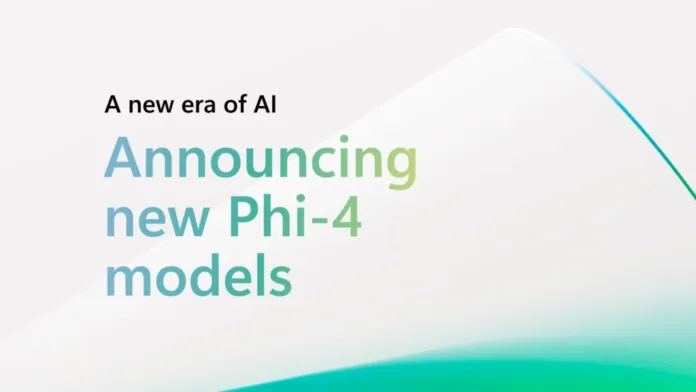In a bold stride forward in artificial intelligence, Microsoft has introduced the Phi-4 Small Language Models, showcasing groundbreaking performance in a compact form. These models, part of the Phi series, are engineered to deliver superior reasoning capabilities while maintaining lower computational requirements—a combination that makes them both practical and powerful for real-world applications.
From academic mathematics to coding and logical problem-solving, the Microsoft Phi-4 Small Language Models are designed to challenge the limitations of traditional AI by combining efficiency, scalability, and reasoning in one package.
What Makes the Phi-4 Series Special?
The Phi-4 lineup includes notable models such as Phi-4-mini-reasoning and Phi-4-reasoning-plus. These are not just scaled-down versions of large models—they are purpose-built with optimized architectures and advanced training strategies.
Phi-4-mini-reasoning features 3.8 billion parameters and excels in mathematical and logical reasoning.
Phi-4-reasoning-plus is larger, with 14 billion parameters, and performs strongly in areas like algorithmic problem-solving, software development, and mathematical computations.
Despite their size, these models are outperforming competitors with much higher parameter counts. This is a major step in AI, where “smaller” no longer means “weaker”.
Optimized for Performance and Efficiency
One of the most exciting elements of these new models is their efficiency-to-performance ratio. Thanks to a training pipeline that uses high-quality synthetic data and innovative fine-tuning techniques, Phi-4 models require significantly less computing power while delivering precise, nuanced reasoning outputs.
Phi-4-mini-reasoning, for instance, is trained with extensive mathematical datasets ranging from high school to graduate-level content. It also supports a context length of up to 128,000 tokens, enabling it to understand and generate detailed, long-form content effectively.
Smarter, Scalable, and Versatile
Microsoft has also emphasized accessibility and deployment flexibility. The Phi-4 models are compatible with popular machine learning frameworks and are available under a highly permissive license. This makes them an ideal solution for developers, researchers, and enterprises looking to integrate intelligent systems without dealing with heavyweight infrastructure.
Whether used in education tools, business intelligence, healthcare analytics, or coding assistance, these models adapt seamlessly and deliver impressive results in real time.
The Road Ahead for Small Language Models
With the launch of the Microsoft Phi-4 Small Language Models, we are witnessing a pivotal moment in the AI landscape. As large language models continue to evolve, the focus is increasingly shifting toward compact, efficient alternatives that still deliver high-quality results.
Phi-4 demonstrates that innovation in AI is no longer just about scale—it’s about smart design, strategic training, and real-world usability. These small language models show how future AI systems can be faster, more cost-effective, and widely accessible.
Conclusion
Microsoft has redefined what’s possible with compact AI through the Phi-4 series. By combining high reasoning power, efficiency, and flexibility, the Microsoft Phi-4 Small Language Models stand out as one of the most exciting advancements in artificial intelligence this year.
Their impact will likely span industries, opening new doors in how we use AI in daily applications—from personalized learning to enterprise automation.
